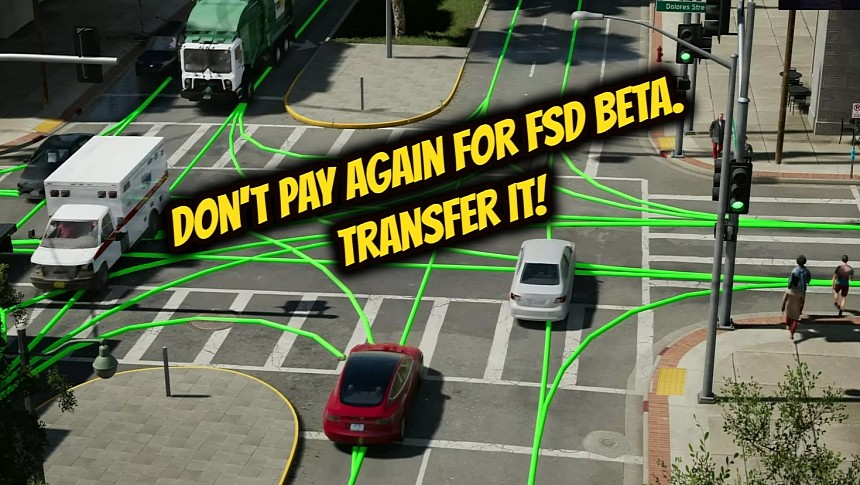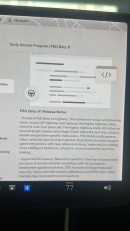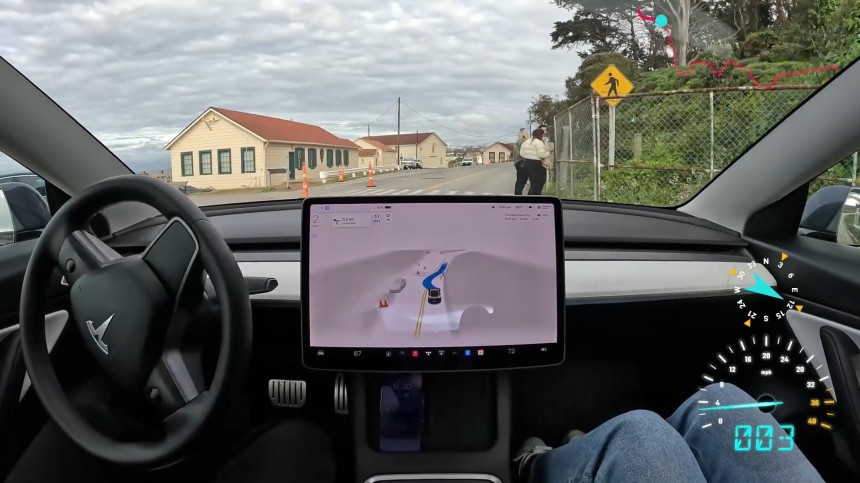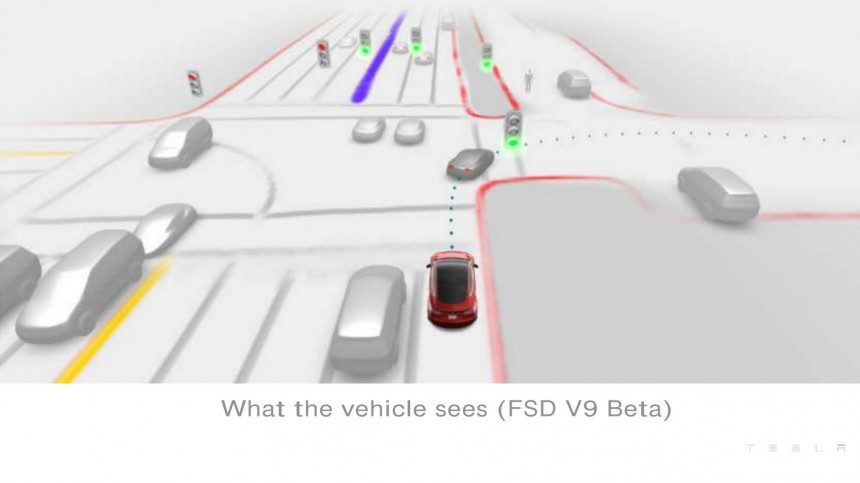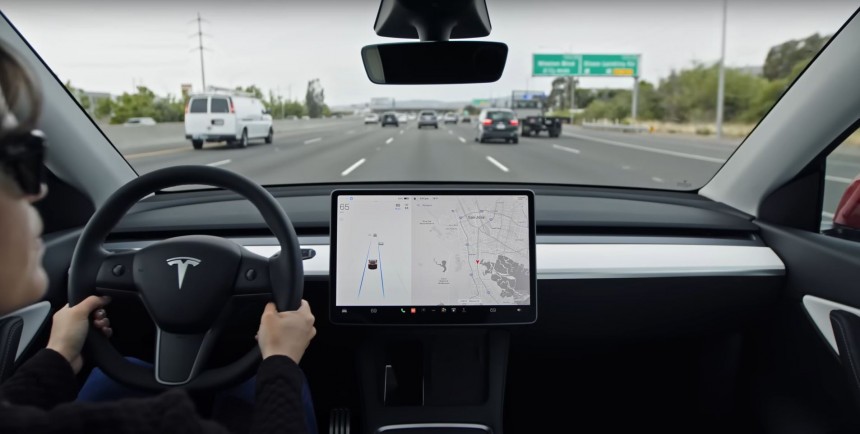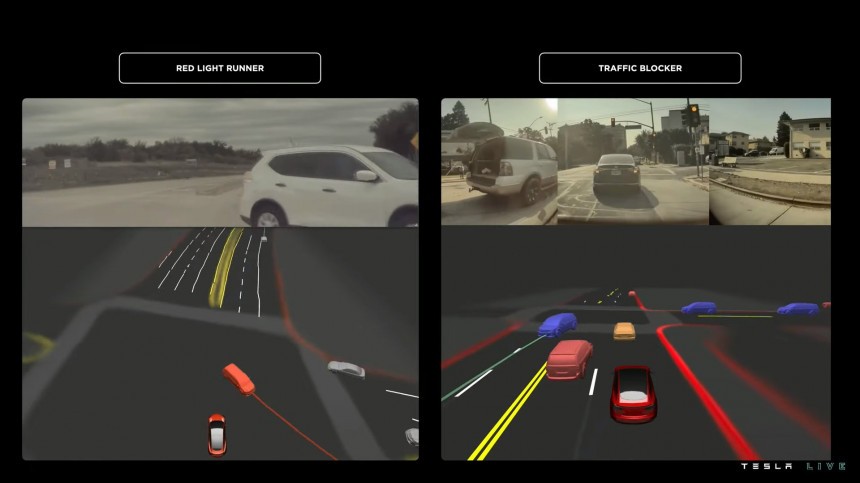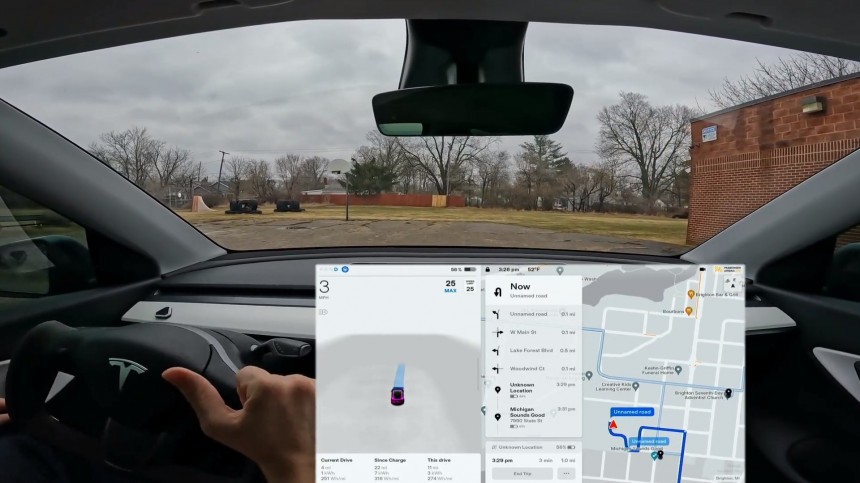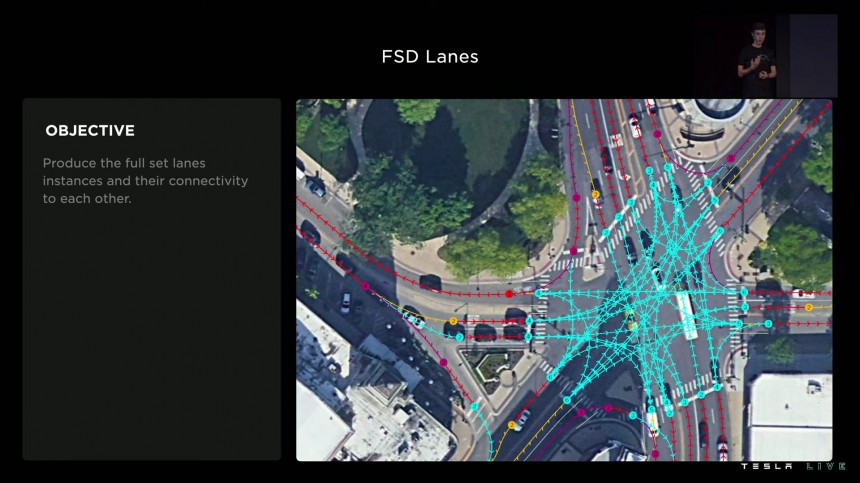Besides making appealing and efficient electric vehicles, Tesla is also very good at securing generous profit margins. Full Self-Driving Beta (FSD Beta) is one of those products that help the brand make more money and secure its place in the fight for automated driving. But for a brief period, it allows its customers to do something that couldn't have been done before – transfer FSD Beta onto a new Tesla. No, it's not about generosity.
In 2016, prospective Tesla Model X owners were told that purchasing an extra set of sensors would eventually get them an advanced driver-assistance system that could enable "full self-driving capability at a safety level substantially greater than that of a human driver." Later that year, the automaker announced that all its vehicles (including the Model 3) had "full Self-Driving hardware."
Notice the terminology used there? It doesn't say anywhere that the cars would become robotaxis at the push of a button.
Seven years ago, the hardware suite comprised eight cameras, twelve ultrasonic sensors, and a forward-facing radar. All those components were connected to a "powerful computer" that processed the data inputs and should have theoretically relieved the human of their driving duties.
Today, all that's left are cameras and a new computer. Hardware 4 is slowly replacing Hardware 3, and upgrading a car by replacing the latter with the former is impossible. Not even Tesla will do it.
To this day, FSD Beta is still not ready to take over a Tesla vehicle and replace the driver. It didn't even work on highways until last year. Recently, the world's most valuable automaker also clarified that the software is nothing more than an advanced driver-assistance system.
That official explanation came after a letter was sent to the California Department of Motor Vehicles. It was written in black and white that FSD Beta wouldn't transform its EVs into robotaxis, admitting that driving autonomy was still far away.
Meanwhile, other industry players like Waymo or Cruise were making significant progress in this sector.
But the brand knew how to do marketing without needing any advertising. It transformed the whole FSD Beta thing into an exclusive perk for which users had to qualify. Moreover, starting in 2019, the "lucky" early adopters paid for it and learned they had to follow strict rules to keep the software active. If things went wrong and the user did not behave nicely, they would be banned from activating the feature for a fortnight.
In some extreme cases (with over five strikes), the user would be stripped of their right to use FSD Beta. But at the beginning of this year, all the records were cleaned, and buyers previously banned could again use FSD Beta.
ADAS here, ADAS there, ADAS nowhere?
Some customers were frustrated with all the promises and ever-changing rules. They took the matter to court. In its defense, Tesla said that failing to realize a long-term goal "is not fraud." It won.
According to the SAE J3016 standard that defines a Level 2 ADAS, the person behind the wheel is always driving, even when various support features are on and their feet are not on the pedals. Today, only Mercedes-Benz reached genuine and certified Level 3 autonomous driving with its Drive Pilot system.
At the time of writing, Tesla has made it clear that FSD Beta requires active driver supervision and does not make the vehicle autonomous. So, there shouldn't be any confusion left about this program.
But one promise Tesla has kept is making early buyers of FSD Beta feel good about themselves because the price of the unfinished software went up. It now costs $15,000 – three times more than the price first shown in April 2019. After four years, the return on this "investment" kept most early adopters interested.
Sadly, however, it has recently been shown that the automaker doesn't put as much value as its customers on FSD Beta. At first, a company advisor said the ADAS doesn't impact the value of used vehicles on trade-ins. But after Elon Musk was asked about it, the brand started factoring in FSD Beta. Still, it didn't start paying $15,000 for it, but less than $10,000. In some cases, the software was valued at under $4,000.
That has (righteously) been blown out of proportion in various online environments, which seems to have prompted Elon Musk to make FSD Beta transferable onto a new EV. It also brings us to the story's main point: the recently released transfer rules.
But there are a couple of things you must know beforehand.
To be eligible for this one-time transfer, customers must take delivery of their new EV by September 30, 2023, and have both vehicles on the same Tesla account. The weird thing, however, is that they must spec the new unit with FSD Beta. But there's no guarantee that deliveries of cars ordered later (throughout August or September) will happen before September 30, 2023.
Fret not because the automaker says the $15,000 will be discounted from the final payment of the new vehicle. It's unclear how this will happen, but Tesla guarantees you won't have to pay twice for FSD Beta.
Keep in mind that the transfer capability only applies to vehicles that have been delivered after July 20, 2023. Moreover, leased Teslas are not eligible.
The good news is that customers with Hardware 3 vehicles can buy a new car now and get FSD Beta to run on the new Hardware 4. After the necessary over-the-air updates are completed, they'll have the latest equipment and operating information to enjoy the next stage of FSD Beta development.
If, for some reason, a person decides that they want FSD Beta back on the older EV, they will not be able to do that. Once transferred, FSD Beta remains transferred.
But there still are some questionable aspects uncovered by the new transfer rules.
But this offer comes right before Project Highland is believed to debut a new interior and exterior design language. It's also possible that we might see some updated underpinnings or powertrains.
Next, if you bought Enhanced Autopilot and later upgraded to FSD Beta, transferring the still-in-development software to a new car cancels both suites on the replaced unit. Thus, the vehicle left without FSD Beta will run only basic Autopilot after completing the transfer. As such, the trade-in value will drop because Tesla recently started accounting for it, as stated above.
But what's even weirder is that Tesla ultimately decided to connect FSD Beta with the car instead of the customer's profile. After the software is transferred, it remains with the vehicle, and, as the brand currently says, it cannot be transferred onto a new EV again.
If this attempt to respond to buyers' demands was not meant to be a quarterly cash grab, Tesla should have made FSD Beta transferable based on customers' accounts. Since all the vehicles come out of the factory with the necessary hardware for the ADAS thanks to streamlined production, it would've made more sense to allow buyers to activate FSD Beta on virtually any Tesla-made EV they get to drive.
They've already paid once for the suite, so why must they spend the money again when buying a new car?
Finally, the best thing about this "one-time FSD Beta transfer" thing is that Tesla finally broke and admitted it has to give customers what they want, albeit for the wrong reasons. Soon, we might see the automaker make the right move and associate the ADAS with the customer's profile.
That's the right thing to do when someone pays $15,000 for lines of code that can work on any of the brand's existing four-door products.
Notice the terminology used there? It doesn't say anywhere that the cars would become robotaxis at the push of a button.
Seven years ago, the hardware suite comprised eight cameras, twelve ultrasonic sensors, and a forward-facing radar. All those components were connected to a "powerful computer" that processed the data inputs and should have theoretically relieved the human of their driving duties.
Do fairytales come true?
Although introduced to much fanfare, by October 2016, the system wasn't ready for fleet-wide activation. Tesla said it needed more time to "calibrate the system using millions of miles of real-world driving to ensure significant improvements to safety and convenience." Thus, even though full autonomy was the name of the game, and some customers believed it could happen, the EV maker was making its first shy steps in the self-driving domain.To this day, FSD Beta is still not ready to take over a Tesla vehicle and replace the driver. It didn't even work on highways until last year. Recently, the world's most valuable automaker also clarified that the software is nothing more than an advanced driver-assistance system.
That official explanation came after a letter was sent to the California Department of Motor Vehicles. It was written in black and white that FSD Beta wouldn't transform its EVs into robotaxis, admitting that driving autonomy was still far away.
Meanwhile, other industry players like Waymo or Cruise were making significant progress in this sector.
In some extreme cases (with over five strikes), the user would be stripped of their right to use FSD Beta. But at the beginning of this year, all the records were cleaned, and buyers previously banned could again use FSD Beta.
ADAS here, ADAS there, ADAS nowhere?
Some customers were frustrated with all the promises and ever-changing rules. They took the matter to court. In its defense, Tesla said that failing to realize a long-term goal "is not fraud." It won.
According to the SAE J3016 standard that defines a Level 2 ADAS, the person behind the wheel is always driving, even when various support features are on and their feet are not on the pedals. Today, only Mercedes-Benz reached genuine and certified Level 3 autonomous driving with its Drive Pilot system.
At the time of writing, Tesla has made it clear that FSD Beta requires active driver supervision and does not make the vehicle autonomous. So, there shouldn't be any confusion left about this program.
Sadly, however, it has recently been shown that the automaker doesn't put as much value as its customers on FSD Beta. At first, a company advisor said the ADAS doesn't impact the value of used vehicles on trade-ins. But after Elon Musk was asked about it, the brand started factoring in FSD Beta. Still, it didn't start paying $15,000 for it, but less than $10,000. In some cases, the software was valued at under $4,000.
That has (righteously) been blown out of proportion in various online environments, which seems to have prompted Elon Musk to make FSD Beta transferable onto a new EV. It also brings us to the story's main point: the recently released transfer rules.
Know this before you shall transfer
First thing first, you need to have a Tesla vehicle with FSD Beta enabled on it. It must be bought outright or upgraded from Enhanced Autopilot, not subscribed to. If you plan on acquiring a new Tesla soon and intend to have the ADAS on your next EV without paying twice for it, then you can transfer the software suite to that brand-new car.But there are a couple of things you must know beforehand.
Fret not because the automaker says the $15,000 will be discounted from the final payment of the new vehicle. It's unclear how this will happen, but Tesla guarantees you won't have to pay twice for FSD Beta.
Keep in mind that the transfer capability only applies to vehicles that have been delivered after July 20, 2023. Moreover, leased Teslas are not eligible.
The good news is that customers with Hardware 3 vehicles can buy a new car now and get FSD Beta to run on the new Hardware 4. After the necessary over-the-air updates are completed, they'll have the latest equipment and operating information to enjoy the next stage of FSD Beta development.
But there still are some questionable aspects uncovered by the new transfer rules.
Straigtforwadness? No. Dubiousness? Yes!
The refreshed Model 3 is expected to be officially presented this fall. The automaker might want to get rid of all the current model-year units it has in stock, so it incentivizes prospective customers to buy a new car now. Tesla's promising that they'll be able to enjoy FSD Beta on a new vehicle without buying it twice.But this offer comes right before Project Highland is believed to debut a new interior and exterior design language. It's also possible that we might see some updated underpinnings or powertrains.
Next, if you bought Enhanced Autopilot and later upgraded to FSD Beta, transferring the still-in-development software to a new car cancels both suites on the replaced unit. Thus, the vehicle left without FSD Beta will run only basic Autopilot after completing the transfer. As such, the trade-in value will drop because Tesla recently started accounting for it, as stated above.
If this attempt to respond to buyers' demands was not meant to be a quarterly cash grab, Tesla should have made FSD Beta transferable based on customers' accounts. Since all the vehicles come out of the factory with the necessary hardware for the ADAS thanks to streamlined production, it would've made more sense to allow buyers to activate FSD Beta on virtually any Tesla-made EV they get to drive.
They've already paid once for the suite, so why must they spend the money again when buying a new car?
Finally, the best thing about this "one-time FSD Beta transfer" thing is that Tesla finally broke and admitted it has to give customers what they want, albeit for the wrong reasons. Soon, we might see the automaker make the right move and associate the ADAS with the customer's profile.
That's the right thing to do when someone pays $15,000 for lines of code that can work on any of the brand's existing four-door products.
